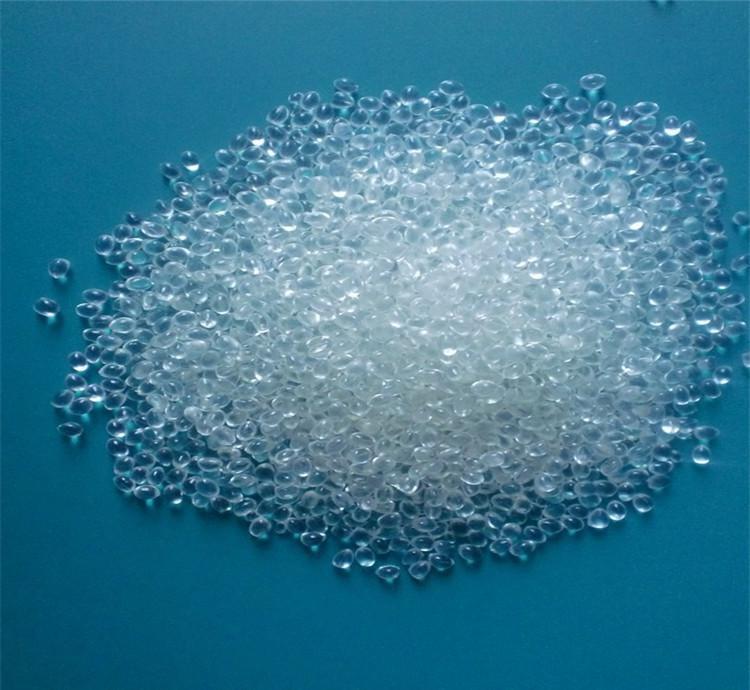TPU
TPU (thermoplastic polyurethane elastomer) is an emerging plastic variety. Because of its good processability, weather resistance and environmental friendliness, TPU is widely used in shoe materials, pipes, films, rollers, cables and wires and other related industries.
Thermoplastic Polyurethane elastomer, also known as thermoplastic polyurethane rubber, or TPU for short, is a (AB)n-block linear polymer, A is a high molecular weight (1000-6000) polyester or polyether, B is a diol containing 2-12 straight chain carbon atoms, and the chemical structure between AB chain segments is connected with diisocyanate, usually MDI.
Thermoplastic polyurethane rubber relies on intermolecular hydrogen bonding crosslinking or light crosslinking between macromolecular chains, and both crosslinking structures are reversible as the temperature increases or decreases. The intermolecular forces are weakened in the molten or solution state, and strong intermolecular forces are joined together after cooling or solvent evaporation to restore the properties of the original solid.
Polyurethane thermoplastic elastomer has two types of polyester and polyether, white irregular spherical or columnar particles, relative density 1.10-1.25, polyether type relative density is smaller than the polyester type. The glass transition temperature of polyether type is 100.6-106.1℃, and the glass transition temperature of polyester type is 108.9-122.8℃. The brittleness temperature of polyether type and polyester type is lower than -62℃, and the low temperature resistance of hard ether type is worse than that of polyester type.
The outstanding features of polyurethane thermoplastic elastomer are excellent abrasion resistance, excellent ozone resistance, high hardness, high strength, good elasticity, low temperature resistance, good oil resistance, chemical resistance and environmental resistance, and polyether ester hydrolysis stability in a humid environment far exceeds that of polyester type.
Polyurethane thermoplastic elastomer is non-toxic, tasteless, soluble in methyl ethyl, cyclohexanone, tetrahydrofuran, dioxane, dimethyl formamide and other solvents, also soluble in toluene, ethyl acetate, butanone, acetone in a suitable proportion of mixed solvents, showing a colorless and transparent state, with good storage stability.

PU
PU (polyurethane) is a general term for polymer compounds generated by the reaction of diisocyanate or polyisocyanate with compounds with more than 2 hydroxyl groups, which contain many repeating NHCOO groups in the main chain. Commonly used diisocyanates include toluene diisocyanate (TDI), diphenylmethane diisocyanate (MDI), hexamethylene diisocyanate (HDI), isophorone diisocyanate (IPDI), dicyclohexylmethane diisocyanate (HMDI), polymethylene polyphenyl polyisocyanate (PAPI), benzylidene diisocyanate (XDI), etc.
Depending on the hydroxyl component used, they can be divided into polyester type and polyether type. They can be used in the manufacture of plastic products, wear-resistant synthetic rubber products, synthetic fibers, hard and soft foam products, adhesives and coatings, etc.
TPU and PU are essentially composed of the same material, but in making these two kinds of adhesive materials, they do not use the same formula. These two kinds of adhesives are divided into many kinds of properties. Different formulas do not produce the same characteristics of the rubber. These properties refer to the mechanical and physical properties.


